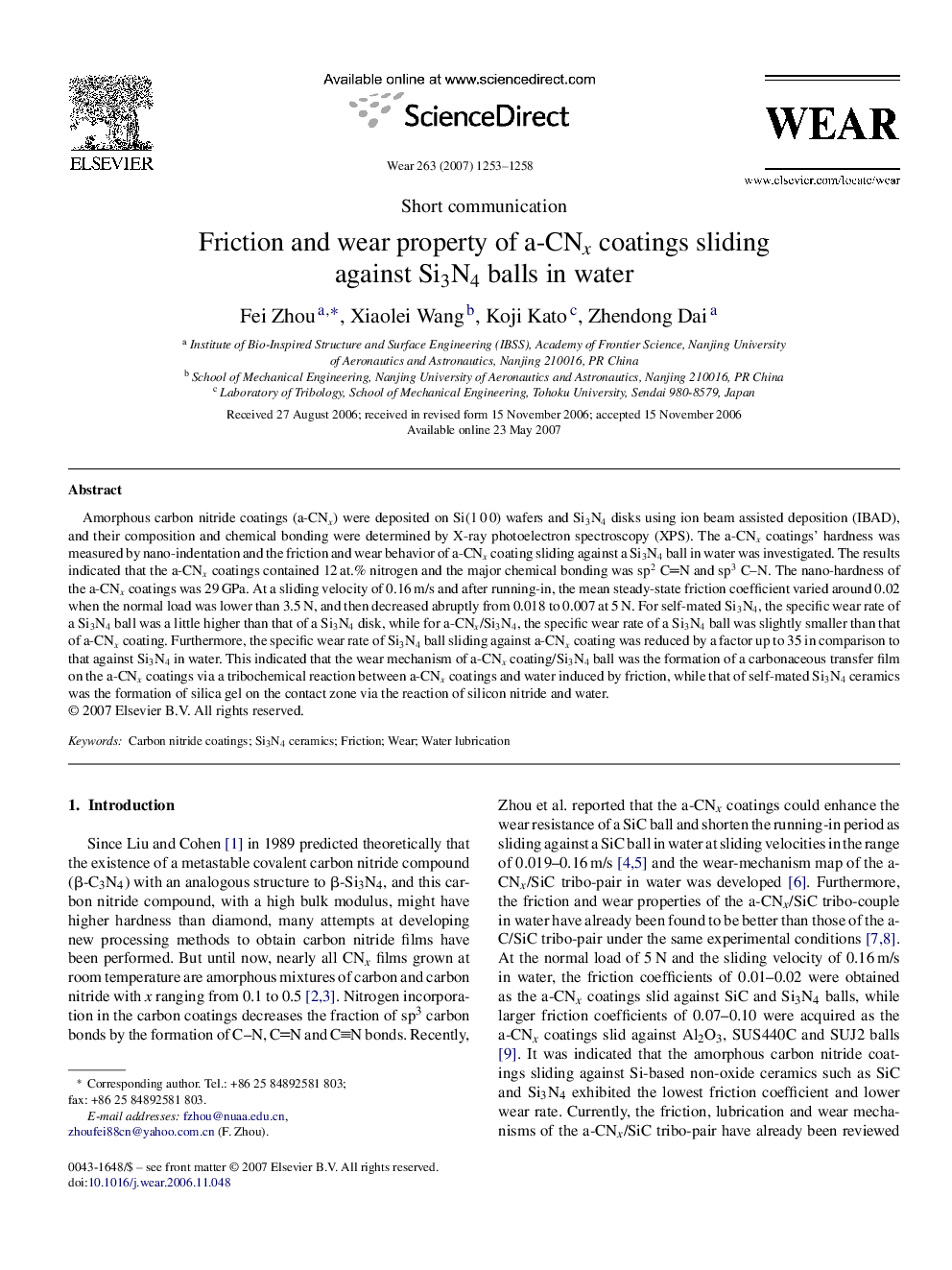| Article ID | Journal | Published Year | Pages | File Type |
|---|---|---|---|---|
| 620020 | Wear | 2007 | 6 Pages |
Abstract
Amorphous carbon nitride coatings (a-CNx) were deposited on Si(1Â 0Â 0) wafers and Si3N4 disks using ion beam assisted deposition (IBAD), and their composition and chemical bonding were determined by X-ray photoelectron spectroscopy (XPS). The a-CNx coatings' hardness was measured by nano-indentation and the friction and wear behavior of a-CNx coating sliding against a Si3N4 ball in water was investigated. The results indicated that the a-CNx coatings contained 12Â at.% nitrogen and the major chemical bonding was sp2 CN and sp3 C-N. The nano-hardness of the a-CNx coatings was 29Â GPa. At a sliding velocity of 0.16Â m/s and after running-in, the mean steady-state friction coefficient varied around 0.02 when the normal load was lower than 3.5Â N, and then decreased abruptly from 0.018 to 0.007 at 5Â N. For self-mated Si3N4, the specific wear rate of a Si3N4 ball was a little higher than that of a Si3N4 disk, while for a-CNx/Si3N4, the specific wear rate of a Si3N4 ball was slightly smaller than that of a-CNx coating. Furthermore, the specific wear rate of Si3N4 ball sliding against a-CNx coating was reduced by a factor up to 35 in comparison to that against Si3N4 in water. This indicated that the wear mechanism of a-CNx coating/Si3N4 ball was the formation of a carbonaceous transfer film on the a-CNx coatings via a tribochemical reaction between a-CNx coatings and water induced by friction, while that of self-mated Si3N4 ceramics was the formation of silica gel on the contact zone via the reaction of silicon nitride and water.
Related Topics
Physical Sciences and Engineering
Chemical Engineering
Colloid and Surface Chemistry
Authors
Fei Zhou, Xiaolei Wang, Koji Kato, Zhendong Dai,
